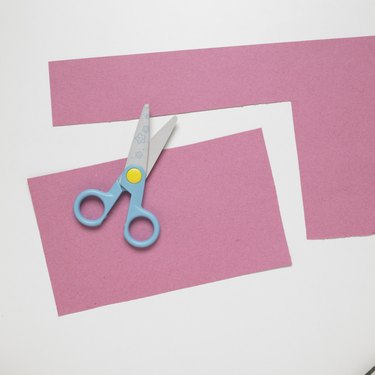
Manufactured by Plaid, Mod Podge is an adhesive, sealant and finish for decorative surfaces. Often used in decoupage, Mod Podge is available in a variety of formulations to meet different craft needs. As a result, it can also be used on puzzles, glass, ceramic, plastic and photo-transfer projects.
Choosing a Mod Podge Formula
Video of the Day
Find the Mod Podge formula that best fits your project and surface:
Video of the Day
- Canvas -- brush stroke gloss, brush stroke matte, glitter, gloss, glow-in-the-dark, matte, satin, shimmer or sparkle
- Fabric -- fabric or glitter
- Glass and ceramics -- gloss, glow-in-the-dark, hard coat, matte, outdoor, satin, shimmer, or sparkle
- Jewelry -- glitter, gloss, glow-in-the-dark, hard coat, matte, shimmer or sparkle
- Kid's projects -- glitter, gloss, glow-in-the-dark, matte, puzzle-saver, shimmer or sparkle
- Paper -- brush stroke gloss, brush stroke matte, glitter, gloss, glow-in-the-dark, hard coat, matte, shimmer, or sparkle
- Scrap-booking -- glitter, glow-in-the-dark, paper gloss, paper matte, shimmer, or sparkle
- Outdoor projects -- outdoor uses. Remember that Mod Podge is not completely waterproof.
Materials Needed
- Mod Podge of choice
- Container
- Water
- 3/4-inch flat brush
- Scissors or craft knife
- Cutting mat
- Fine-grit sandpaper
- Pencils
- Ruler
- Acrylic paint (optional)
- Mod Podge tool set. This set has accessories, including a small roller, to help reduce air bubbles under materials when using Mod Podge as an adhesive.
Preparing Surfaces and Materials
Apply Mod Podge only to clean surfaces. Prepare glass, metal and plastic by using a damp cloth to wipe them with soap and water. Clean papier-mache, terra cotta and plaster using only a damp cloth. Let all surfaces dry completely before applying Mod Podge.
Unfinished surfaces, like wood or canvas, need a primer or base coat before you use Mod Podge. Apply two coats of gesso primer or acrylic paint to unprimed canvas. Primed canvas can simply be wiped clean with a damp cloth. Sand wood before applying Mod Podge, using a damp cloth to wipe off excess sawdust.
Generally, paper does not need preparation before a Mod Podge project. However, you can spray both sides with a clear acrylic sealer. This is a necessary step if you plan to apply Mod Podge over printer ink.
Fabric should be washed, dried and ironed before applying Mod Podge. Lay it on a flat surface and use a brush to apply a thin layer of fabric Mod Podge. This stiffens the fabric, making it easier to cut into shapes while preventing frayed edges.
Cut fabric, paper or other materials to fit your surface. Keep cuts straight by using a ruler and pencil.
Applying Mod Podge
If decoupaging, apply materials to the surface in layers. Do the bottom layer first, using Mod Podge as the adhesive. Remove air bubbles using the Mod Podge tool set. Work from the center outwards. After applying all materials to the surface, apply two final coats of Mod Podge to the surface.
If using Mod Podge as a sealer, apply two coats over the surface. For a smoother finish, sand between coats. If using Mod Podge primarily as an adhesive, apply a medium coat of Mod Podge to the back of materials before adhering to surface. Use the Mod Podge tool set to remove air bubbles, working outwards from the center.
Let each coat of Mod Podge dry for 15 to 20 minutes, as recommended by the manufacturer, before applying a new coat. For a smoother finish, sand between coats. When the project is completely dry, spray clear acrylic sealer over the Mod Podge to reduce tackiness.
Project Cleanup
Rinse brushes and work area immediately after using. Mod Podge is difficult to clean up when dry.
Tips
- Do not Mod Podge over felt or polymer-coated plastics.
- Soak a Mod Podge bottle in warm water to help open a stuck cap.
- Keep Mod Podge away from children.